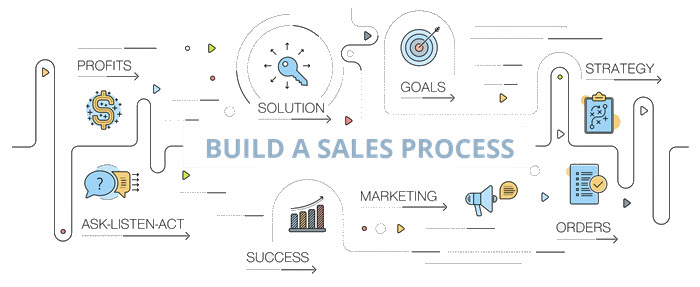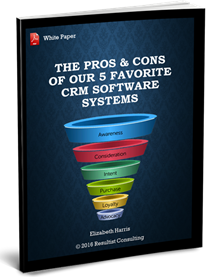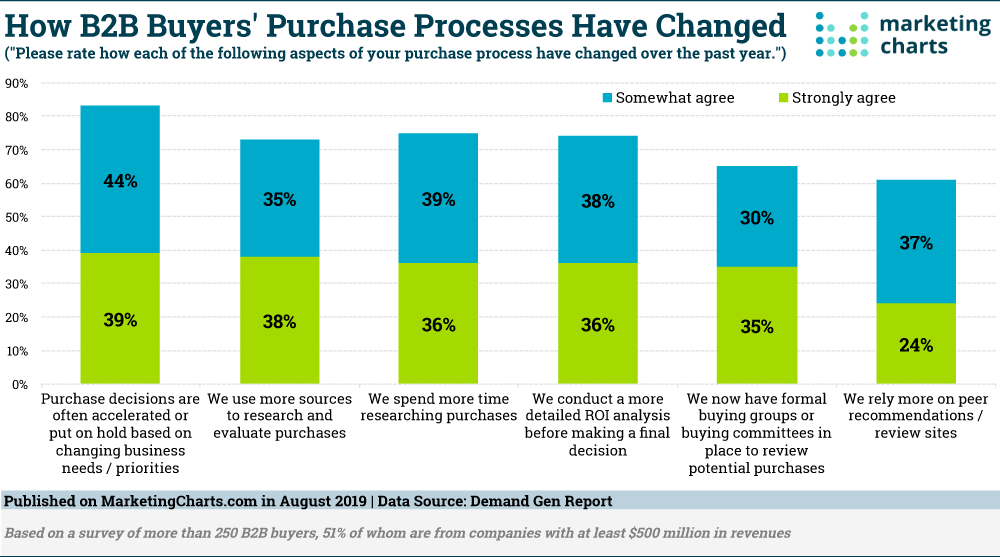
Are you a new business that needs to develop its sales process? Or, maybe you're an established firm that sells things the same way today as you did 10 years ago.
Many companies are finding that their sales processes aren't keeping up with the times. Selling techniques have evolved significantly over the years, and companies must adapt their sales methods to meet customers' changing needs.
The vast majority (83%) of senior-level B2B executives report that business needs and priorities have resulted in them either accelerating or postponing purchase decisions in the past year.
According to Demand Gen Report’s 2019 B2B Buyers Survey Report: “B2B buyers are spending more time researching their purchases. Indeed, three-quarters (75%) of the more than 250 B2B executives surveyed agree that this is the case, while 73% say they now use more sources to research and evaluate purchases.”
Before developing (or updating) your sales process, be open to:
- Where your customers spend time, how they connect with influencers, and where they want to buy from you, not just where you want to have them purchase.
- Focus on doing business the way your customers want to purchase.
- Consider the customer’s digital commerce experience, service exchange, and the method they use for making decisions about purchases.
- Evolving the buying experience away from the way “it has always been.”
Your sales methodology and process are two different things. Once you define what sales methodology works best for your products and services, you will be able to develop the most effective sales process to meet your goals.
The Evolving Sales Model
Since the invention of currency in 600 B.C., people have been selling to each other. Methods have varied, but we've seen the most change in sales models over just the past century.
Manipulative selling was the predominant strategy in the 20th century, which earned salespeople a negative reputation. Instead of relying on the strength of a product, these salespeople would use manipulative tactics to get prospects to the finish line, usually selling them things they didn't need, often at prices they couldn’t afford.
Dale Carnegie influenced the relationship selling model, which is certainly more positive. It presumes that people are more willing to buy from someone they know and trust, so salespeople spend more time cultivating relationships.
But there's an element missing in both of those models, which is the consideration of the customer's wants and needs. Manipulative sales no longer work (some would say they never did) thanks to consumers growing understanding of these tactics and the widespread access to online information. Relationship selling needs to expand to include “how your customers want to buy”.
Successful Sales Processes Include
B2B buyers are spending more time researching their purchases. Today's successful salespeople are more like consultants who are experts in their field. They provide information and frame the product or service as a solution to the prospect's problem.
If your sales team is still relying on cold calling something needs to change. To be effective today and into the future, both your sales methodology and sales process could be due for an overhaul.
How to Build an Effective Sales Process
You might choose a single methodology to drive your sales process or apply different methodologies for various steps in the process, or for different products, services, or customer personas. To keep things as simple as possible, here are six steps in the sales process that you can customize for your own sales methodologies:
- Research & Preparation
This is the most important and most often skipped. The most effective salespeople know everything possible about their product or service, target customers, competition, industry, and the unique value that their brand delivers. Thorough research and preparation are the foundations for the rest of your sales process.
Know everything about your product - how it was designed and built, its features and benefits, and any potential weak points.
Research your competition. What do they offer that is different?
Put yourself in your typical buyer persona's shoes. What issues are they generally facing? How does your product or service help them solve their problems?
- Prospecting
Prospecting is the process of finding and cultivating new, early-stage leads that have the potential to become customers. This essential part of the sales process can be time-consuming and must be approached thoughtfully.
Prospecting varies based on industry, product and service. Depending on the prospects ideal customer profile.
- It can take place at industry events such as conferences, tradeshows, networking events.
- The prospecting hat is always on and can happen with people/companies you do business with, including vendors and service providers.
- Since ‘everyone’ is more accessible via social media, you have more power than you realize and can reach out directly based on a Google Alert vs calling the office.
- News articles remain and ‘lists’ generated by publishers are a gold mine but be aware that others are making contact from them as well. Be ready to ‘make their day’ with something helpful.
Your sales team should agree on an ideal customer profile and use this benchmark to screen potential prospects. This will enable you to allocate your limited resources to qualified, high-value leads.
WARNING: There are software developers who know you are hungry and looking for new prospects. They build widgets based on possibilities. While shiny on the surface, they may or may not offer value. Be very cautious.
- Connecting
The connection step involves your sales rep contacting those early-stage leads to determine whether they will be a good fit your product or service. In today's sales environment, not every sale is a "good sale."
Regardless of how or when the initial introduction and connection happens, it will eventually lead to an email, a phone call, a Zoom meeting and/or a personal meeting.
Connecting with a phone call, email or Zoom meeting can provide a sales rep with some preliminary information about the prospect. This might include their role in an organization (for B2B sales) and the potential issues they are attempting to solve.
If there is a fit, you'll want to move forward with the process. If there isn't, say so. The prospect will likely remember this and either return to you later or send some other clients your way.
- Needs Assessment (Discovery)
If you have the attention of a potential customer, this is excellent news. But you must still do additional research before moving to the presentation phase.
Learn as much as possible about the prospect, their company, and the pain point(s) they are trying to solve. This might require that you do some online research, visit the location, talk to customers, and speak with additional contacts.
This extra work on the front end will pay off through the conclusion of the sales process. I can’t overemphasize the importance of research or what we’ll refer to as “intelligence work.”
- Presenting
How you handle a presentation will depend on your industry as well as the preferences of the prospect. Most salespeople run formal sales presentations that include a product or service demonstration.
This is fine, but it should be focused on how the customer's needs are being met, not just the features and benefits. You should insert the customer's specific scenario into the presentation so that they can see how the product or service will work for them.
- Closing
If you have effectively addressed the customer’s needs and pain points, closing a sale should happen almost automatically. (If it doesn’t you have missed a step somewhere along the way – usually in the Discovery phase.)
It includes receiving a purchase order or getting the final signatures on the quote, or proposal, or picking up the deposit check.
Closing a sale should never be a forced or reluctant process. In the end, there must be a mutually beneficial agreement between the parties. Your new customer solves their problem and your company has made a sale.
What Comes Next?
Building a more modern sales process is something that every company should explore, but don't stop there. If something isn't working, you need to identify shortfalls and be ready to make a change.
Carefully review your results relative to each step in the sales process. Are you losing more prospects during one phase than another? If so, what can be done differently to inspire someone to move to the next phase?
Remember whatever sales process you develop today isn't set in stone. Times change quickly, and your business must remain nimble in response to evolving trends. Continue to have check-ins with your sales reps and adjust your process as necessary.

The right CRM will help to guide you through your sales process and help you track the progress.
Get the white paper:
The Pros & Cons of CRM Software Systems

